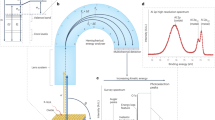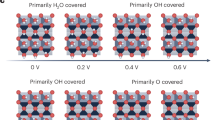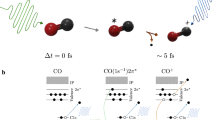Abstract
WE have already reported some applications of electron spectroscopy in the study of chemical binding1. We showed that the shifts of the electron lines of an element can be correlated with its chemical state of oxidation. Our method makes use of Auger and photo electrons produced by X-rays and is called ESC A (electron spectroscopy for chemical analysis). Most of the results reported were obtained from the element sulphur, and electron spectra from this element have, for example, been used to solve a specific problem concerning the molecular structure of cystine S-dioxide2.
This is a preview of subscription content, access via your institution
Access options
Subscribe to this journal
Receive 51 print issues and online access
$199.00 per year
only $3.90 per issue
Buy this article
- Purchase on SpringerLink
- Instant access to full article PDF
Prices may be subject to local taxes which are calculated during checkout
Similar content being viewed by others
References
Fahlman, A., Hamrin, K., Hedman, J., Nordberg, R., Nordling, C., and Siegbahn, K., Nature, 210, 4 (1965).
Axelson, G., Hamrin, K., Fahlman, A., Nordling, C., and Lindberg, B., Spectrochim. Acta (in the press).
Author information
Authors and Affiliations
Rights and permissions
About this article
Cite this article
AXELSON, G., ERICSON, U., FAHLMAN, A. et al. New Approach to Structure Studies in Organic Chemistry. Nature 213, 70–71 (1967). https://doi.org/10.1038/213070a0
Received:
Revised:
Issue date:
DOI: https://doi.org/10.1038/213070a0
This article is cited by
-
High Energy Photoelectron Spectroscopic Study of Carbon Fibre Surfaces
Nature (1970)
-
A non-empirical study of hydrogen bonding in the dimer of formamide
Theoretica Chimica Acta (1970)
-
Limits to Resolving Power in Photoelectron Spectroscopy
Nature (1967)
-
Shifts in Electron Spectra of Nitrogen in Organic Molecules
Nature (1967)



